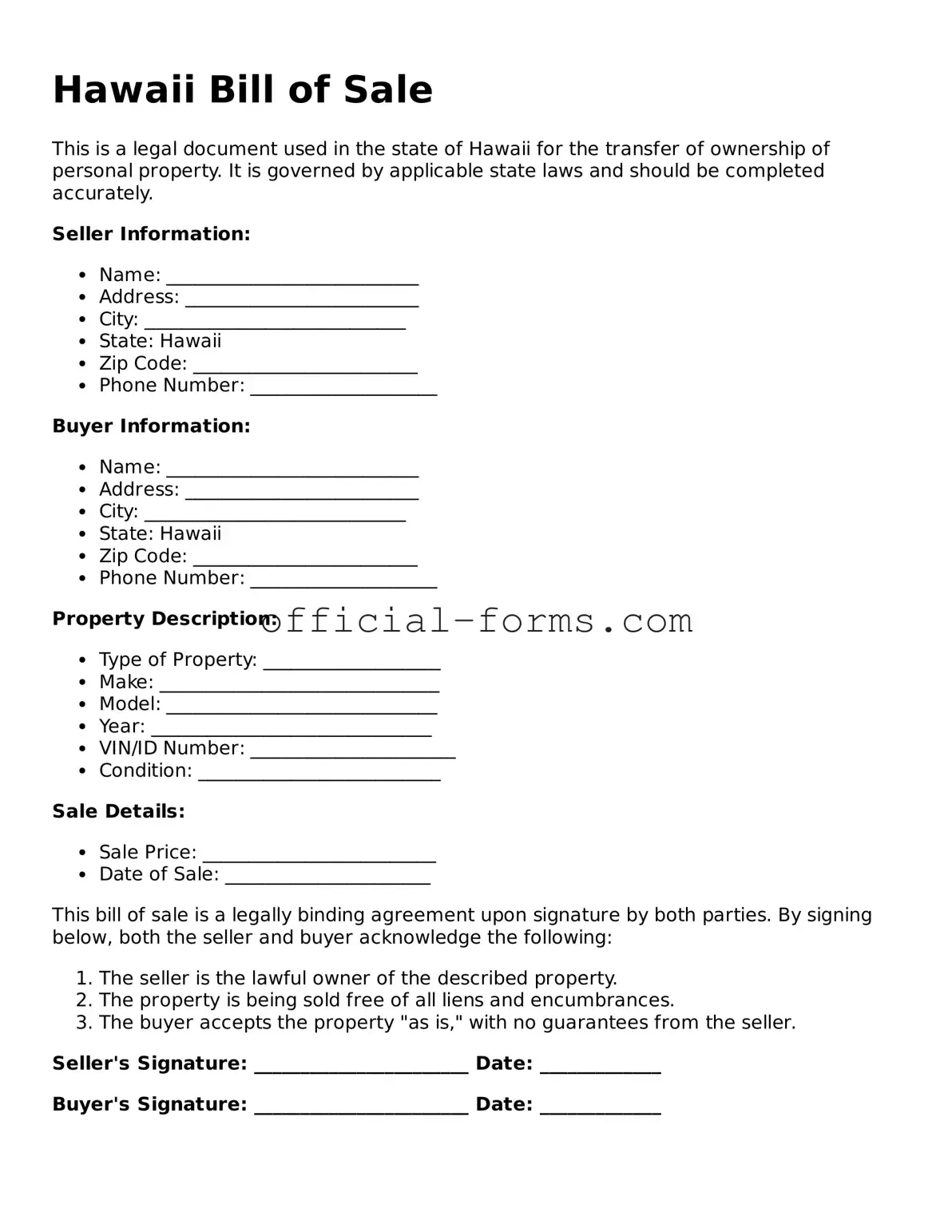When completing the Hawaii Bill of Sale form, individuals often make several common mistakes that can lead to complications later. One frequent error is failing to include all required information. Each party’s name, address, and contact details must be clearly stated. Omitting even one piece of information can create confusion and hinder the transaction.
Another mistake is not accurately describing the item being sold. It is essential to provide a detailed description, including the make, model, year, and condition. A vague description may lead to disputes about what was actually sold.
Many people overlook the importance of signatures. Both the seller and buyer must sign the document for it to be legally binding. If either party neglects to sign, the Bill of Sale may not hold up in court.
Not including the sale date is another common oversight. The date of the transaction is crucial for record-keeping and can impact warranty claims or disputes. Always ensure that the date is clearly indicated on the form.
Some individuals fail to provide the correct purchase price. This figure must reflect the actual amount paid for the item. An incorrect price can lead to tax issues or disputes between the parties involved.
Leaving out the method of payment can also create problems. It is important to specify whether the payment was made in cash, check, or another form. This detail adds clarity and can protect both parties in case of future disagreements.
Another mistake is neglecting to include any warranties or guarantees. If there are specific terms regarding the condition of the item or any assurances made by the seller, these should be documented in the Bill of Sale to avoid misunderstandings.
People sometimes forget to retain copies of the completed form. Both the buyer and seller should keep a signed copy for their records. This can be invaluable if questions arise later regarding the transaction.
Finally, failing to check local laws and regulations can lead to issues. Each county in Hawaii may have specific requirements for a Bill of Sale. It is wise to confirm that all local guidelines are followed to ensure the document is valid.
By being aware of these common mistakes, individuals can ensure a smoother transaction and avoid potential legal issues down the line. Attention to detail when filling out the Hawaii Bill of Sale form is crucial for both parties involved.
